
Journal of Insect Biodiversity
Scope & Guideline
Advancing Knowledge in Insect Ecology and Evolution
Introduction
Aims and Scopes
- Taxonomy and Systematics:
The journal emphasizes the description of new species and revisions of existing taxa, contributing significantly to the classification and understanding of insect biodiversity. - Ecological Studies:
Research on the ecological roles and behaviors of insects in different environments is a core focus, including studies on distribution, habitat preferences, and interactions with other species. - Biodiversity Assessments:
The journal promotes biodiversity assessments through field surveys and checklists, enhancing knowledge about insect populations and their distributions globally. - Conservation Biology:
Papers addressing the conservation status of insect species and their habitats are prominent, advocating for the protection of biodiversity and ecosystems. - Morphological and Molecular Analyses:
The integration of morphological descriptions with molecular data is encouraged to provide a comprehensive understanding of insect relationships and evolutionary history.
Trending and Emerging
- Climate Change Impacts on Insect Biodiversity:
An increasing number of studies are focusing on how climate change affects insect distributions, behaviors, and life cycles, highlighting the need for understanding these dynamics in the face of global warming. - Habitat-Specific Biodiversity Studies:
Research targeting specific habitats, such as wetlands, mountains, and urban areas, is on the rise, showcasing the need to understand insect diversity in diverse ecological contexts. - Interdisciplinary Approaches:
There is a growing trend towards interdisciplinary studies that combine entomology with ecology, conservation biology, and even social sciences to address complex biodiversity issues. - Technological Advances in Insect Identification:
The adoption of new technologies, such as DNA barcoding and imaging techniques, is increasingly prevalent, facilitating more accurate species identification and ecological assessments. - Ecological Interactions and Networks:
Research exploring the intricate relationships between insects and their ecosystems, including food webs and mutualistic interactions, is becoming more prominent, reflecting a holistic view of biodiversity.
Declining or Waning
- Invasive Species Research:
Research focusing on the impact of invasive insect species has decreased, possibly due to a shift in interest towards native biodiversity and conservation efforts. - Traditional Pest Management Studies:
Papers centered on conventional pest management strategies are less common, indicating a possible transition to more integrated and ecological approaches to pest control. - Morphological Studies without Molecular Context:
There is a decline in purely morphological studies that do not incorporate molecular techniques, suggesting a shift towards more integrative research methodologies. - Generalized Surveys of Common Species:
Publications that report on common or well-known species without new findings or significant insights are diminishing, as the journal prioritizes novel contributions to insect knowledge.
Similar Journals

REVISTA DE LA SOCIEDAD ENTOMOLOGICA ARGENTINA
Fostering Global Collaboration in Entomological StudiesREVISTA DE LA SOCIEDAD ENTOMOLOGICA ARGENTINA is an esteemed open-access journal dedicated to the field of entomology, published by the SOCIEDAD ENTOMOLOGICA ARGENTINA. Since its transition to open access in 2013, the journal has sought to promote research in insect science, ecology, and related disciplines, facilitating global dissemination of knowledge and encouraging collaborative studies across borders. Located in the vibrant scientific landscape of La Plata, Argentina, the journal is indexed in Scopus and categorized in the fourth quartile of ecology and insect science, reflecting its commitment to enhancing the discourse within these critical fields. Aiming to bridge the gap between researchers, students, and professionals, REVISTA DE LA SOCIEDAD ENTOMOLOGICA ARGENTINA serves as a platform for innovative research, reviews, and reports on ecological interactions, behavior, and systematic entomology, ultimately driving forward our understanding of insect biodiversity and its broader environmental impacts.
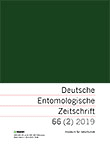
DEUTSCHE ENTOMOLOGISCHE ZEITSCHRIFT
Advancing Knowledge in EntomologyDEUTSCHE ENTOMOLOGISCHE ZEITSCHRIFT is a premier open access journal dedicated to the vibrant field of entomology, proudly published by Pensoft Publishers. With a rich publication history dating back to 1954, this journal serves as a vital platform for disseminating high-quality research in Animal Science, Zoology, and Insect Science, currently holding a commendable Q2 quartile ranking in these disciplines. The journal embraces the accessibility of science, having transitioned to an open-access model in 2014, ensuring that all readers can engage with cutting-edge findings and innovative studies without barriers. Researchers, professionals, and students alike will find the journal's breadth of topics—ranging from basic ecological studies to applied entomological research—essential for keeping abreast of developments that impact biodiversity and ecosystem functioning globally. With its commitment to supporting the entomological community, DEUTSCHE ENTOMOLOGISCHE ZEITSCHRIFT remains a cornerstone for anyone interested in the intricate world of insects.

Insects
Advancing the Frontiers of Entomological ResearchInsects is a prominent open-access journal published by MDPI, dedicated to advancing research in the vibrant field of insect science. Since its inception in 2011, this journal has become a vital resource for academics and professionals alike, also ranked in the prestigious Q1 category within the Insect Science field by Scopus, achieving a remarkable rank of 26 out of 181 journals. With an ongoing convergence period from 2010 to 2024, Insects provides comprehensive coverage of various aspects of entomology, including but not limited to ecology, behavior, physiology, and applied entomology. Based in Switzerland, the journal promotes an open-access model, ensuring that vital research is readily available to researchers, practitioners, and students globally. This journal not only facilitates the dissemination of groundbreaking entomological research but also fosters collaboration and interdisciplinary dialogue in the field.

INSECTES SOCIAUX
Advancing knowledge in the world of social insects.INSECTES SOCIAUX, published by SPRINGER BASEL AG, is a prestigious international journal established in 1954, dedicated to advancing the field of insect science and ecology. With a robust ISSN of 0020-1812 and an E-ISSN of 1420-9098, INSECTES SOCIAUX maintains a significant impact within its category, boasting a Q2 ranking in both Ecology, Evolution, Behavior and Systematics and Insect Science. This journal serves as a vital platform for researchers and professionals looking to publish high-quality research that enhances our understanding of social insects, their behaviors, interactions, and ecological roles. Despite not being open access, INSECTES SOCIAUX remains a valuable resource, ensuring that critical scientific findings reach the broader academic community. With a comprehensive scope that merges diverse aspects of insect studies, this journal is essential for those engaged in ecological research and insect biology, facilitating an invaluable exchange of knowledge from its headquarters in Basel, Switzerland.

EUROPEAN JOURNAL OF ENTOMOLOGY
Bridging academia and industry in entomology.The European Journal of Entomology, published by the Czech Academy of Sciences, Institute of Entomology, is a pivotal journal in the field of Insect Science. With a solid impact factor and recognized ranking—placed in the Q2 quartile in 2023, and ranked #72 out of 181—this journal offers a platform for researchers and professionals alike to share insightful studies and advancements in entomological research. Since its inception in 1993, the journal has continuously evolved to cover a wide spectrum of entomological disciplines, establishing itself as an essential resource for academia and industry. Although it operates on a subscription basis, the journal ensures accessibility for a broad audience of scholars, students, and enthusiasts eager to stay at the forefront of entomological science. Located in Ceske Budejovice, Czech Republic, this journal not only highlights European contributions but also embraces global perspectives, making it an indispensable reference point in the ongoing exploration of insect biology and ecology.

Myrmecological News
Highlighting the Ecological Importance of Ants WorldwideMyrmecological News is a premier open-access journal dedicated to the vibrant field of insect science, with a specific focus on the study of ants and their ecological significance. Published by the renowned Oesterreichische Gesellschaft Entomofaunistik in Vienna, Austria, this journal has been a crucial platform for researchers, professionals, and students alike since its inception in 2009. With a remarkable Q1 ranking in Insect Science and a commendable Scopus rank of 13 out of 181 (93rd percentile), it showcases high-quality research that advances our understanding of myrmecology. The journal not only emphasizes innovative methodologies and findings but also aims to foster interdisciplinary dialogue among scholars in related domains. Researchers can access a wealth of knowledge on ant behavior, ecology, and conservation strategies that are pivotal for biodiversity preservation. Please consider contributing to this vital body of work as we explore the multifaceted roles these fascinating insects play in our ecosystems.
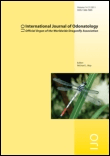
INTERNATIONAL JOURNAL OF ODONATOLOGY
Innovating Insights into Odonatology and BeyondINTERNATIONAL JOURNAL OF ODONATOLOGY, published by Wachholtz Verlag GmbH, is a vital resource for researchers and professionals in the fields of Ecology, Evolution, Behavior, and Insect Science. Established in 1998, this journal provides a platform for the dissemination of innovative research pertaining to odonatology, encompassing the ecological and biological interactions of dragonflies and damselflies. With its focus on advancing knowledge within these scientific disciplines, the journal holds a commendable Q3 ranking in Ecology, Evolution, Behavior and Systematics and a Q2 ranking in Insect Science for 2023, reflecting its significance in academic circles. Although it operates without open access, its articles are accessible through institutional subscriptions, allowing for wide dissemination among scholars and practitioners. The journal's commitment to publishing high-quality, peer-reviewed research makes it an authoritative source of information that enriches the study of odonates and their broader ecological contexts. For inquiries, the journal's editorial team can be reached at C/O Fleet7, Fleethorn 7, Kiel 24103, Germany.
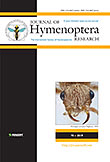
JOURNAL OF HYMENOPTERA RESEARCH
Bridging Knowledge Gaps in Insect EcologyJOURNAL OF HYMENOPTERA RESEARCH is a leading open-access publication dedicated to the advancement of knowledge in the fields of Insect Science, Animal Science and Zoology, and Ecology. Published by Pensoft Publishers since 2011, this journal plays a critical role in facilitating the exchange of significant research findings and insights related to Hymenoptera, a diverse order of insects that includes bees, wasps, and ants. With a commendable impact factor and ranked in the Q1 category for Insect Science and Animal Science, the journal stands out within the scientific community, drawing contributions from researchers globally. Boasting an ISSN of 1070-9428 and an E-ISSN of 1314-2607, the journal not only ensures broad accessibility to its content but also fosters a collaborative environment for professionals and students alike to engage with pioneering research. By reflecting on the converged years of 2007-2024, the JOURNAL OF HYMENOPTERA RESEARCH remains a vital resource for understanding the ecological and evolutionary dynamics of this important group of insects, solidifying its position as a cornerstone in entomological studies.
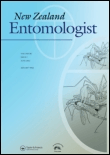
NEW ZEALAND ENTOMOLOGIST
Bridging Past Insights with Future Innovations in EntomologyNEW ZEALAND ENTOMOLOGIST, published by Taylor & Francis Ltd, is a distinguished journal in the field of Insect Science, featuring a rich history dating back to its initial publication in 1952. As a platform for sharing innovative research and critical insights, this journal serves as a vital resource for entomologists and scientists interested in the diverse aspects of insect biology, ecology, and behavior. Although it currently holds a Q4 category in its discipline with Scopus ranking it at the 163rd out of 181 journals, the NEW ZEALAND ENTOMOLOGIST continues to uphold high-quality standards of peer-reviewed articles that contribute significantly to the understanding of insects, particularly within the unique ecosystems of New Zealand. Researchers and professionals are encouraged to submit their findings to enhance the journal's growing repository of knowledge, while students will find a wealth of information to aid their studies and foster their interest in entomological research.
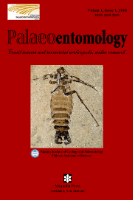
Palaeoentomology
Advancing Knowledge: Bridging Paleontology and EntomologyPalaeoentomology is a leading journal dedicated to the study of fossil insects, fostering a deeper understanding of historical biodiversity and ecosystem dynamics. Published by MAGNOLIA PRESS, this journal provides an essential platform for researchers, educators, and students interested in entomological paleontology and related disciplines. Featuring a wide range of articles that explore fossil records, evolutionary patterns, and paleoenvironments, it serves the scientific community by enriching our understanding of the past. Although currently not open access, the journal prioritizes rigorous peer-review standards and aims to maintain a high impact factor, ensuring that published research meets the evolving demands of the field. Based in Auckland, New Zealand, it welcomes contributions from both established and emerging scientists worldwide, contributing to a vibrant discourse in the study of ancient insects and their ecological relationships.